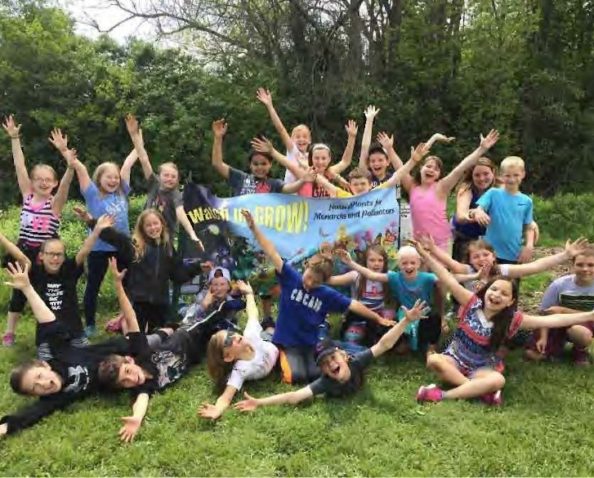Program Area:
Natural Areas Program
County:
McHenry
Grantee:
Friends of Hackmatack National Wildlife Refuge
Grant Date:
March 2017
Grant Amount:
$11,000
Location:
Johnsburg, IL
Friends of Hackmatack National Wildlife Refuge partnered with the nonprofit, Small Waters Education, and Johnsburg School to expand an existing pollinator habitat on school grounds. The grantee added 700 square feet of new pollinator habitat and enhanced over 1,000 square feet of existing habitat with the help of over 175 students from Johnsburg school, primarily 4th graders and members of the Junior High Science Club. The project team installed an interpretive sign that acknowledges the Foundation’s grant contribution and completed the expanded habitat by the end of May 2017.
Over the Summer of 2017, the partners hosted a Pollinator Celebration in conjunction with the annual Monarch Family Fun Fair. More than 700 visitors visited the schools, toured the garden, and learned about pollinators.
Throughout the development and installation of the habitat, Small Waters Education worked with 4th grade classrooms on curriculum related to animal and plant life cycles, the importance of pollinators, and other biodiversity and science topics. In the fall of 2017, the now 5th graders were reintroduced to the pollinator habitat that they helped to install and learned more about native plants as part of their science curriculum.
What’s Next for the Project?
Based on the success of the first year, Johnsburg Schools and Small Waters Education have continued working with every 4th grader. Students come out to the garden for lessons on biodiversity, pollinators, and plant life cycles. During the spring of 2019, 7th graders participated in chemical and biological testing of a small stream that runs adjacent to the pollinator habitat. With assistance from Friends of the Fox River, the students learned about the water quality benefits associated with pollinator habitat by testing the water both upstream and downstream from the habitat. Additionally, the site is very popular with pollinators and students can observe many different species in the late spring and in the fall.




